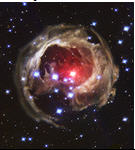
The multibillion dollar breast cancer enterprise has just issued its damning self-assessment:
“Given the attention and resources directed to breast cancer, the public understandably believes that we have made significant progress. As this report shows, that is not the case. We know little about how to prevent breast cancer or how to prevent deaths from the disease.”
- Ending Breast Cancer: A Baseline Status Report. Washington, DC: National Breast Cancer Coalition http://www.breastcancerdeadline2020.org/2020/assets/pdfs/2011-progress-report.pdf
Their goal is grandiose and honorable:
“The National Breast Cancer Coalition [NBCC] has set a deadline to end breast cancer: January 1, 2020.”
“THE DEADLINE: IS IT IMPOSSIBLE? It is. The same way curing polio was impossible. The same way a 4-minute mile was impossible. The same way a man on the moon in nine years was impossible.”
Is stopping breast cancer once and for all as easy as getting to the moon? The latter was primarily based on physics well known since Newton, who had already envisaged satellites circling the earth, and a long history of rocket engineering. Are we as ready to halt breast cancer?
Now, I’m sympathetic to the goal, having just published "Stop breast cancer now! Imagining imaging pathways towards search, destroy, cure and watchful waiting of premetastasis breast cancer" (Gordon, R. (2011) in Breast Cancer – A Lobar Disease. Ed.: T. Tot. London: Springer, p. 167-203. ) so we’ll have to get into the nitty-gritty of the NBCC proposal to see if they truly have all rockets blazing, or are lacking fuel or even aiming at the wrong target. Hints of the latter start with:
“We know little about how to prevent breast cancer or how to prevent deaths from the disease.”
There is an omission here:
1. We can try to prevent breast cancer cells from ever forming. Methods here might include changing what we eat, avoiding carcinogens, genetic counseling to discourage passing on genetic proclivities, improvements in the immune system, tinkering with the growth of young girls’ breasts, etc.
2. Once breast cancer starts, we can try to detect it early and destroy the tumors, while they are small, before they spread (metastasize). This search and destroy method is based on physics.
3. We can let tumors get bigger, but try to prevent them from metastasizing.
4. Once the tumors spread, we can prevent deaths by attacking them with surgery, chemotherapy, radiation therapy, prayer and hope.
Approaches #1 and #4 are not working, as stated above. The NBCC suggests that we all work cooperatively on #1 and #3:
“NBCC advocates believe that ending the disease requires focusing efforts on two key areas: learning the causes of and how to prevent metastasis, and learning how to prevent development of primary disease.”
But #2 is not mentioned at all by the NBCC. Let’s see if we can understand why:
“THE UNCOMFORTABLE REALITY BEHIND EARLY DETECTION: A great deal of attention and resources have focused on the area of early detection. A mantra that has been drummed into our consciousness over the past forty years is that early detection saves lives. The reality is otherwise. About 70% of women in this country [USA] over age 40 have had a mammogram in the last two years. Unfortunately, randomized controlled trials for mammography have shown, at best, a marginal benefit.”
This is true. Finding a small breast tumor is like trying to find a rusty needle in a haystack of needles. The normal breast has an incredible amount of fine, variable texture, unique in every breast, and what we need to target is tumors under 4 millimeters (0.16 inches), most of which have not yet metastasized. Here’s the problem: taking an x-ray mammogram is like going to the edge of a forest and taking a picture of it using the light of the setting sun filtering through it as your light source. You may or may not spot the baby snake quietly perched on a limb deep in the woods. It is remarkable that radiologists do as well as they do.
Three dimensional imaging methods, pushed to their limits, might allow us to examine the forest tree branch by tree branch, leaf by leaf. Computed tomography (CT), magnetic resonance tomography (MRI), and a host of other potential 3D screening methods, are not mentioned in the NBCC report, let alone pairs of these methods, which are now common in general diagnostic radiology.
“Because of increased screening beginning in 1980, there has been a dramatic increase in the incidence of ductal carcinoma in situ (DCIS), abnormal cells contained within the milk ducts that have not spread to other parts of the body. Most of DCIS will never become cancer. However, we are not able to distinguish between the harmful kind of DCIS (that will develop into cancer) and the harmless kind; as a result, many women are treated with interventions that will not help them and could hurt them.”
This is again true. But let’s consider another cancer, melanoma. If you have a new or changed “beauty mark” or nevus on your skin, to paraphrase “we are not able to distinguish between the harmful kind of [nevus] (that will develop into cancer) and the harmless kind”. So we agree to let the dermatologist cut it out and then wait for the pathologist’s report. Why can’t this be a model for breast cancer? The answer is simple: breast tumors are inside. Cutting them out requires needle biopsy or surgery, which are expensive and somewhat unreliable. However, if we gave up insistence on getting that pathologist’s report, then small tumors and, indeed, small benign things that look like they might be tumors, could both be destroyed using any of a number of 3D ablation technologies. We’ll never know which is which, benign or malignant, but so what?
“Screening often detects cancer earlier than it would have been detected because of symptoms. In many cases, this means that screened people know they have the disease longer than unscreened people, but this doesn’t necessarily mean that people diagnosed through screening live longer, counting from the time the disease actually began. Life is not extended, only the amount of time a woman lives knowing the diagnosis.”
True again, but no one has yet reliably detected tumors small enough (less than 4 millimeters) to catch them before metastasis. Mammography often closes the barn door after the horses have already escaped.
“We need more focus on understanding the reality of breast cancer—how to prevent its development, how to stop the aggressive cancers that are not detected with mammography, how to stop breast cancer from recurring, and how to prevent it from metastasizing to other parts of the body and becoming lethal.”
We didn’t reach the moon by aiming a bow and arrow at it. We won’t stop breast cancer with mammography. Put a few billion dollars into competing and complementary physics approaches to 3D imaging and ablation of premetastasis breast cancer, with the goal of search and destroy, and we’ll get there, maybe even by January 1, 2020.

References:
"Ending Breast Cancer: A Baseline Status Report. Washington, DC: National Breast Cancer Coalition" http://www.breastcancerdeadline2020.org/2020/assets/pdfs/2011-progress-report.pdfGordon,R. (2011). "Stop breast cancer now! Imagining imaging pathways towards search, destroy, cure and watchful waiting of premetastasis breast cancer". In: Breast Cancer – A Lobar Disease. Ed.: T. Tot. London: Springer, p. 167-203.






Comments